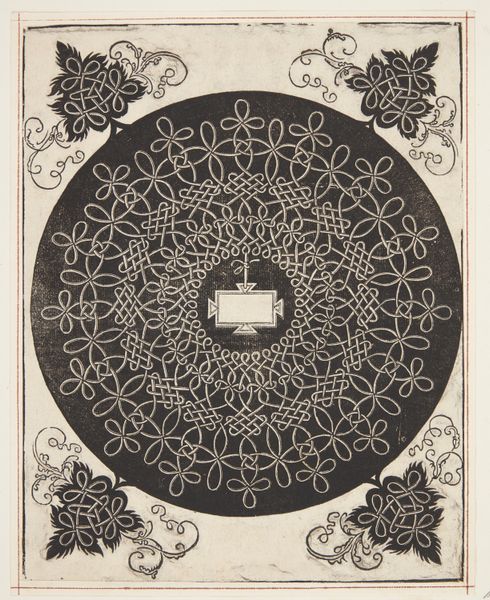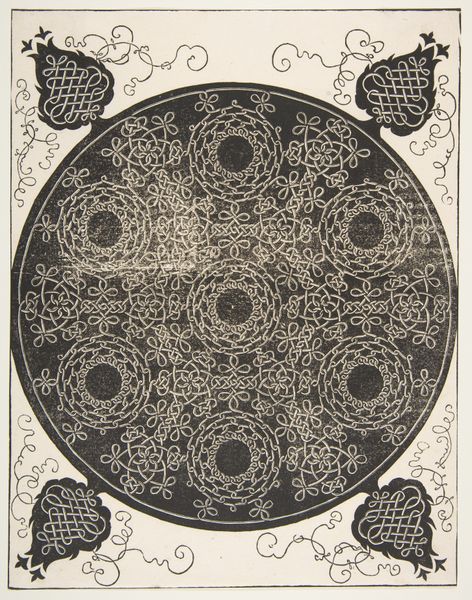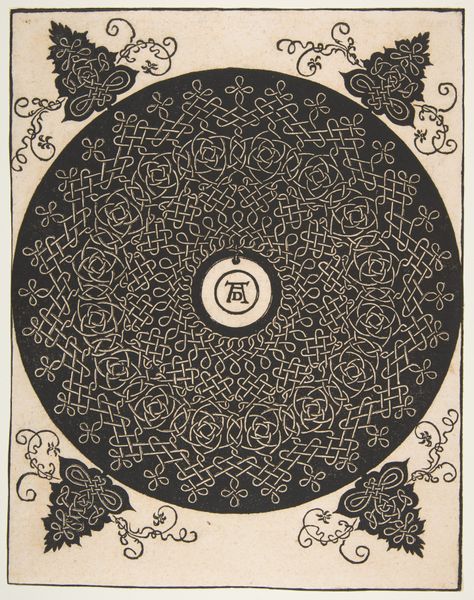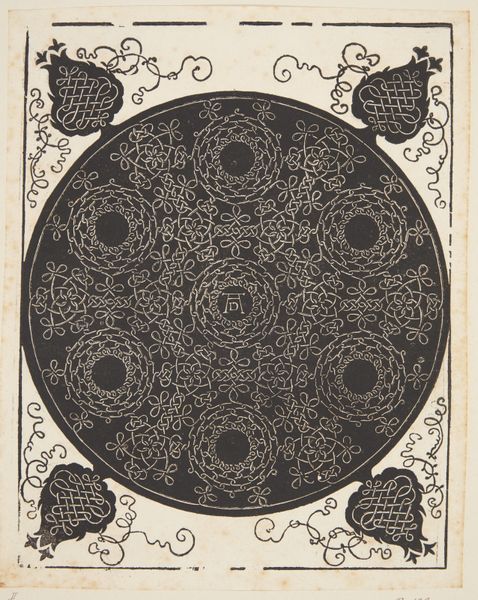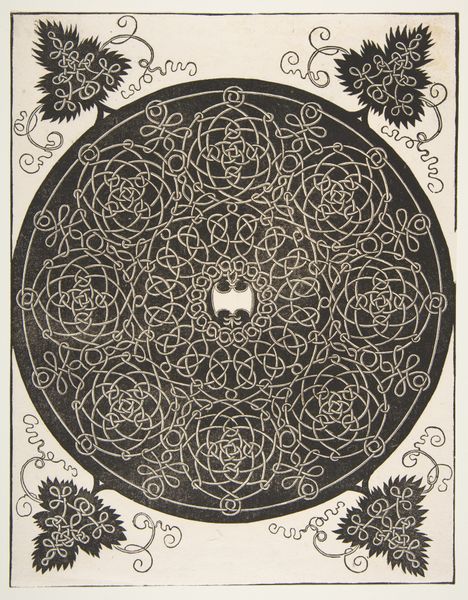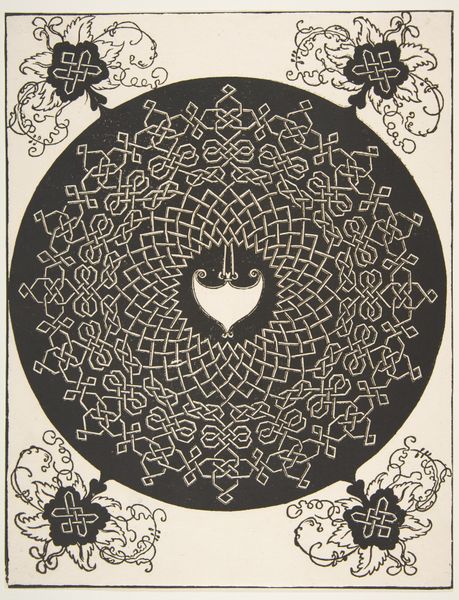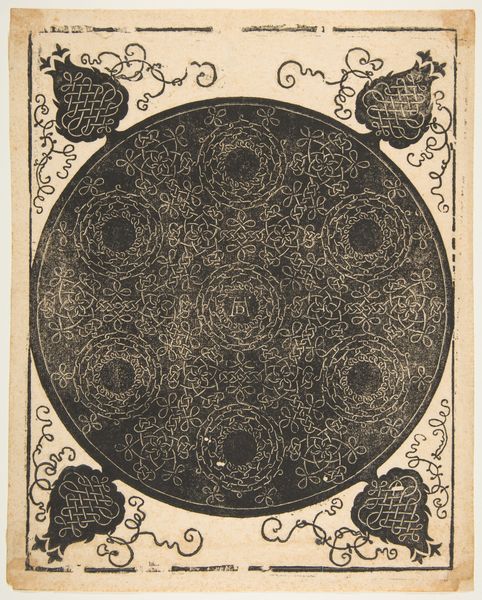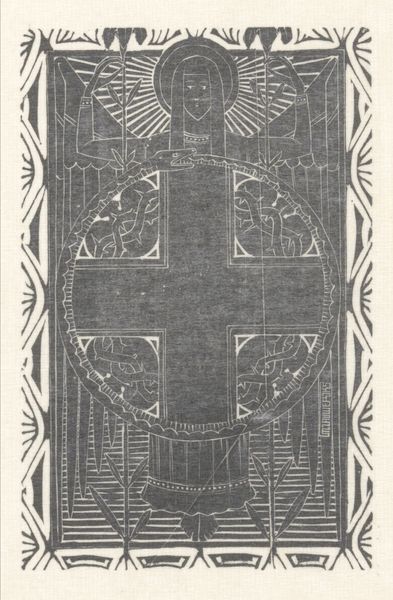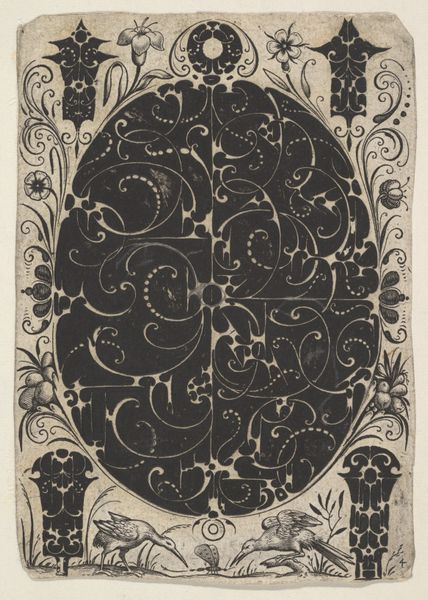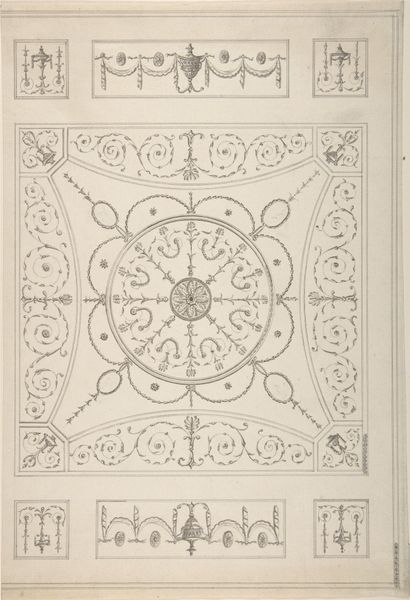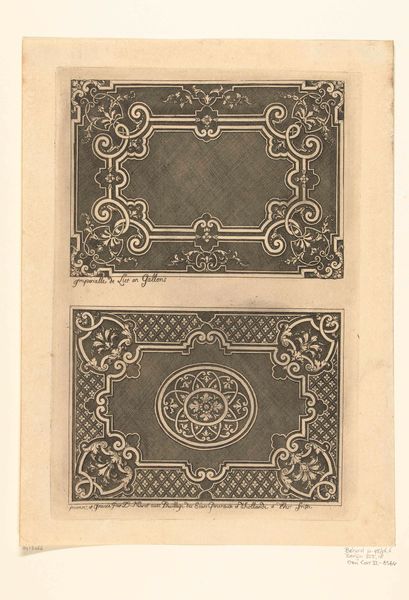
Embroidery Pattern with an Oblong Panel in its Center 1500 - 1521
0:00
0:00
drawing, graphic-art, ornament, print, woodcut
#
drawing
#
graphic-art
#
ornament
# print
#
11_renaissance
#
geometric
#
woodcut
#
line
#
northern-renaissance
#
decorative-art
Dimensions: sheet: 10 9/16 x 8 5/16 in. (26.8 x 21.1 cm)
Copyright: Public Domain
Editor: This is Albrecht Durer’s "Embroidery Pattern with an Oblong Panel in its Center," created between 1500 and 1521. It's a woodcut, and it feels very precise and mathematical, almost like a blueprint. What do you make of it? Curator: I see this piece as a reflection of its time, deeply embedded within the social fabric of the Renaissance. Ornament wasn’t merely decorative; it signaled status, wealth, and adherence to cultural norms. Given that sumptuary laws often restricted elaborate designs to the elite, how might this seemingly 'simple' pattern speak to issues of power and social identity? Editor: So, even a pattern designed for something like embroidery had social implications? Curator: Absolutely. Think about who would have been producing this embroidery, and for whom. Was it intended for personal use or commissioned for wealthy patrons? The act of creation, even within the domestic sphere, was never politically neutral, particularly during periods of social upheaval and reformation. Editor: It's fascinating to consider the intersections of class, gender, and craft here. Were women the primary producers of these types of embroideries? Curator: Likely so. Embroidery was a significant form of artistic expression and economic activity for women. A pattern like this underscores women's crucial roles in artistic production and the transmission of cultural values, but often without formal recognition in the art world. Do you see ways in which the constraints placed on women's creativity influenced their artistic output during the Renaissance? Editor: It definitely sheds new light on how I understand artistic expression within those historical limitations. It makes me rethink craft as a powerful statement. Curator: Precisely. By engaging with historical context, we can move beyond formal analysis and challenge traditional art narratives. What did you find most engaging in the dialogue? Editor: The connection between societal norms, artistic expression and how it relates to current day intersectionality.
Comments
No comments
Be the first to comment and join the conversation on the ultimate creative platform.
